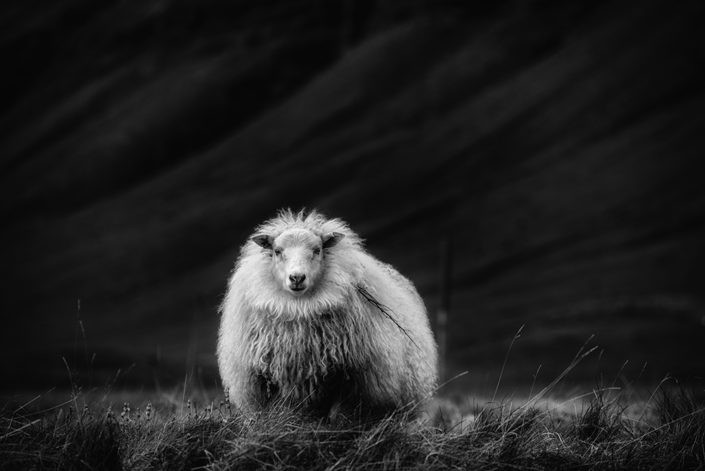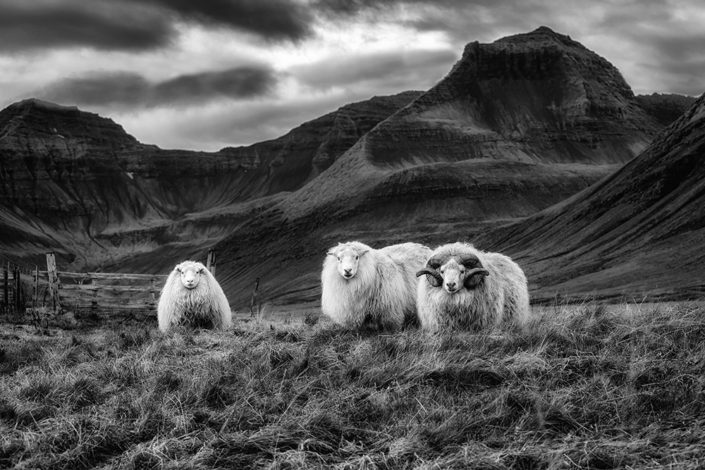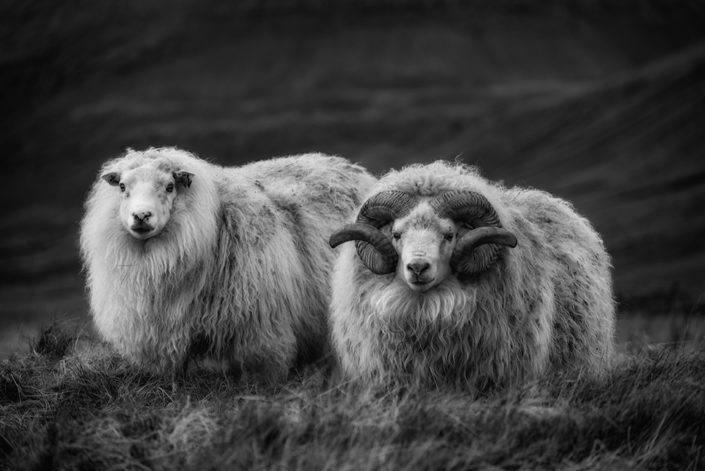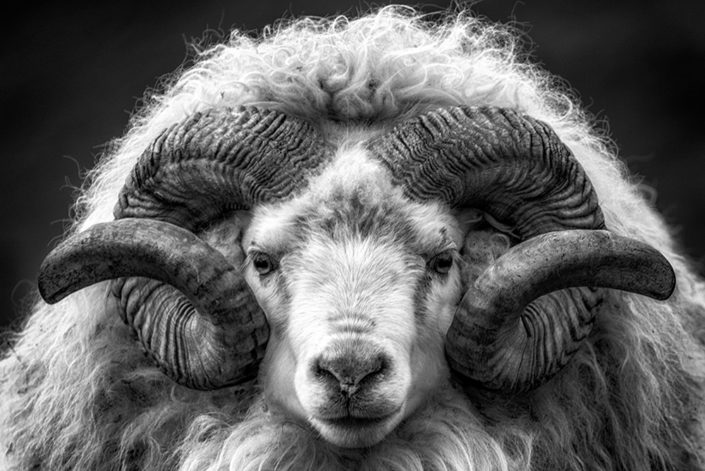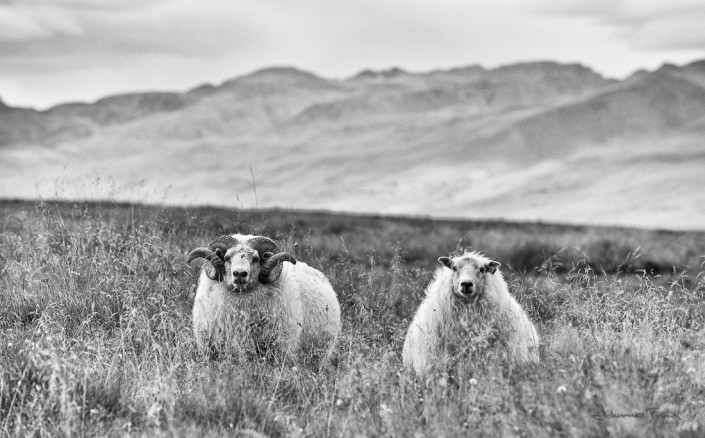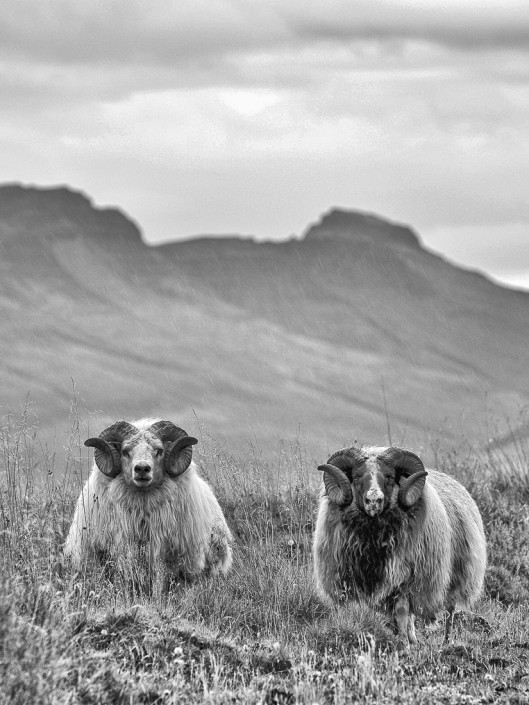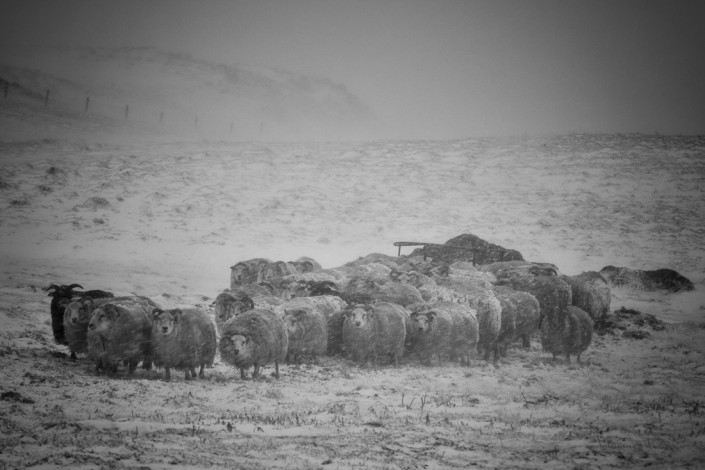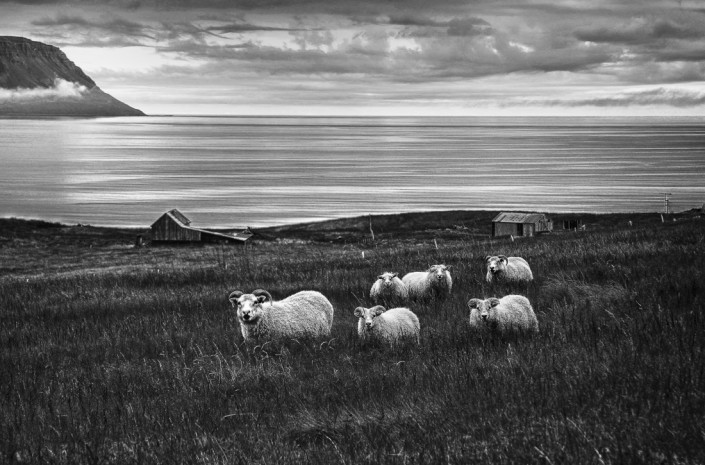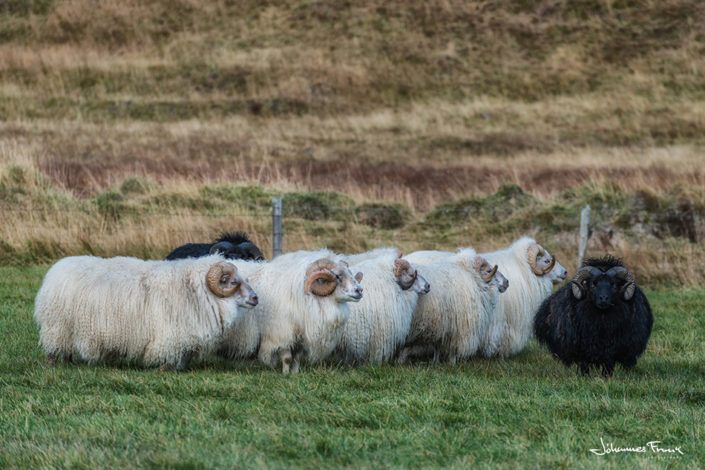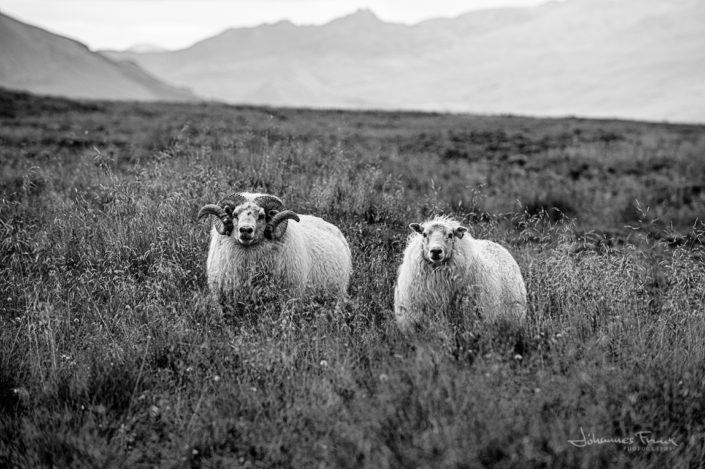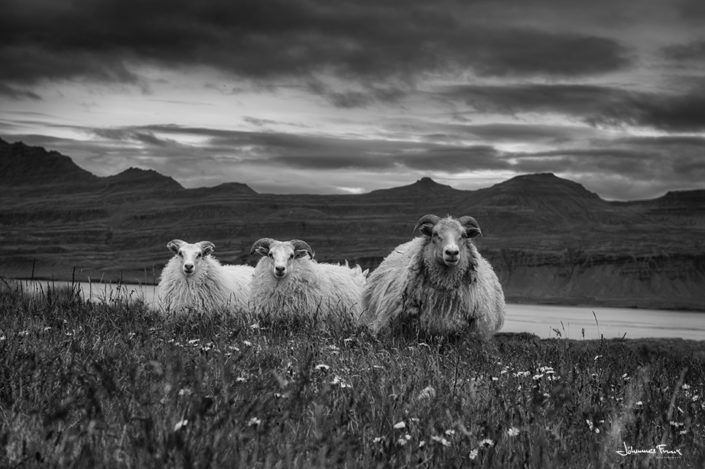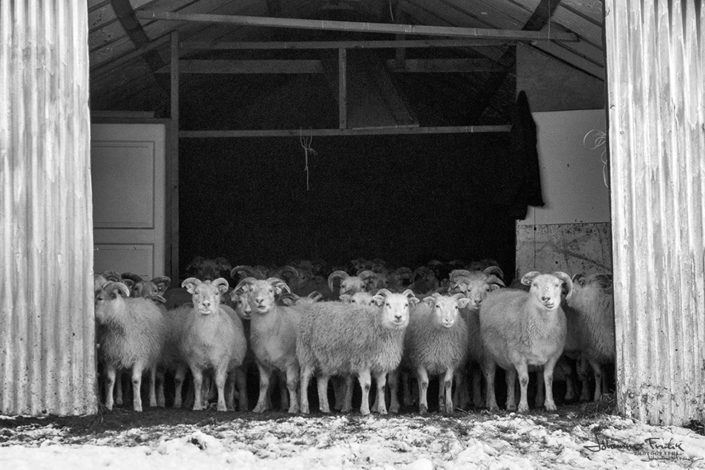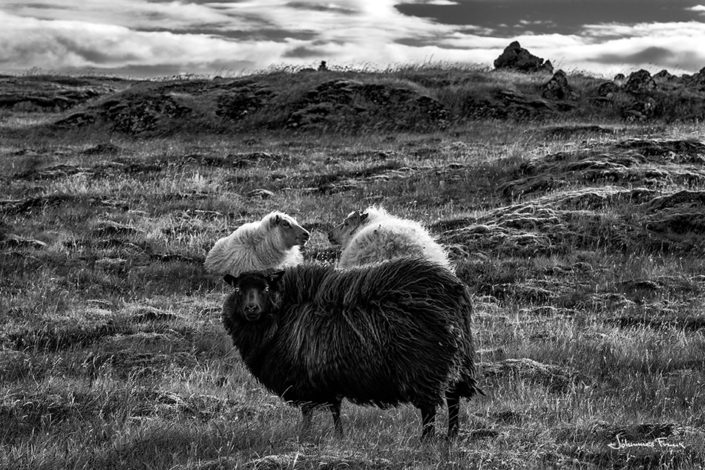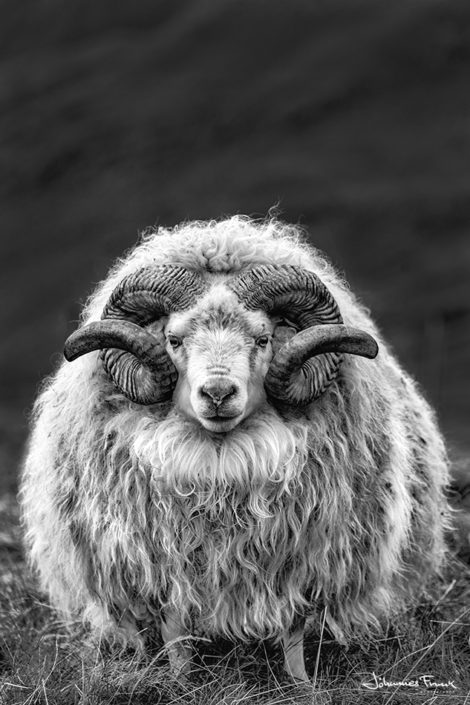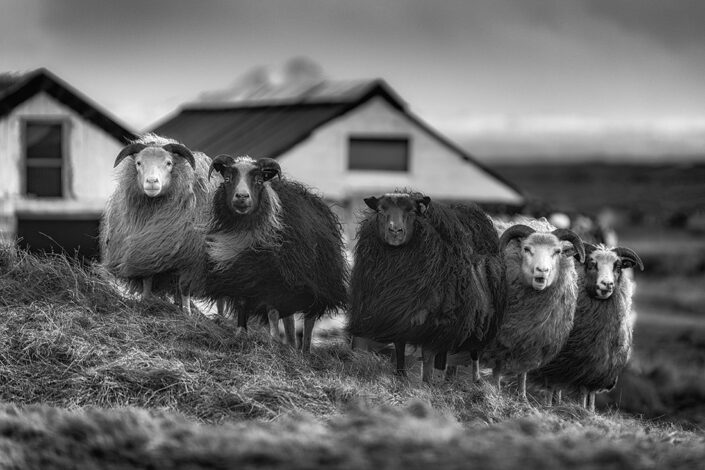ICELANDIC SHEEP
Our Beloved Sheep
When I started taking photographs of the horses here in Iceland I often saw interesting opportunities to take photographs of the Icelandic sheep. The sheep are one of the world’s oldest and purest breeds of sheep. Growing up in the West Fjords as a young boy my family had sheep witch ware kept not faraway from our home in Thingeyri. A very common thing to do for many family’s back in the day, not so much now.
I had to help with their feeding during wintertime, collecting them late in the summer from the fields and mountains and helping with making food from them. They also are a very interesting animal to photograph and a little more challenging than horse photography. The sheep is partly wild and approaching them can be difficult . The male Ram´s are especially difficult and often they just turn their backside to you. Getting them to look straight into the lens can be frustrating but when they do and also have big horns it is rewarding.

